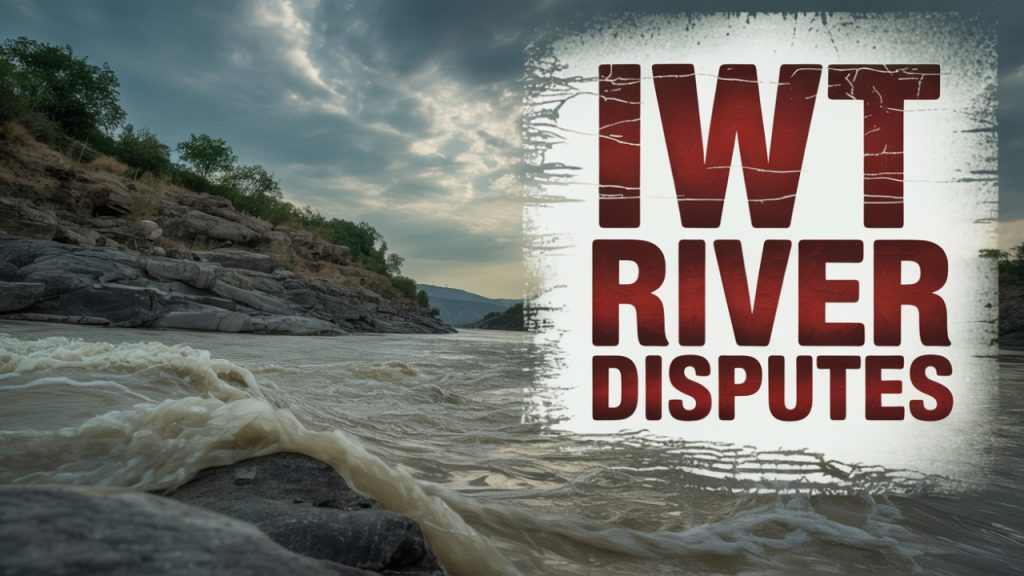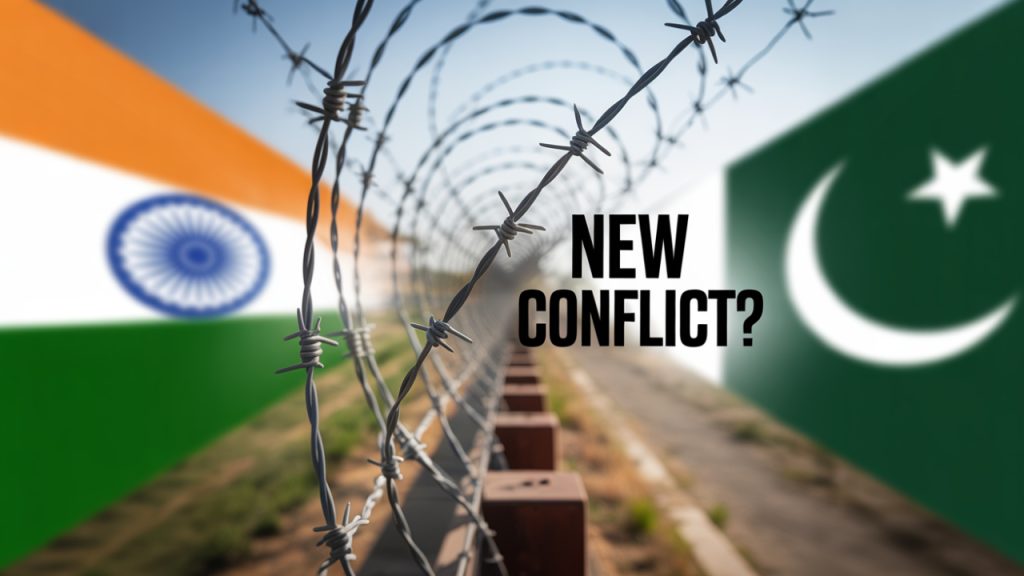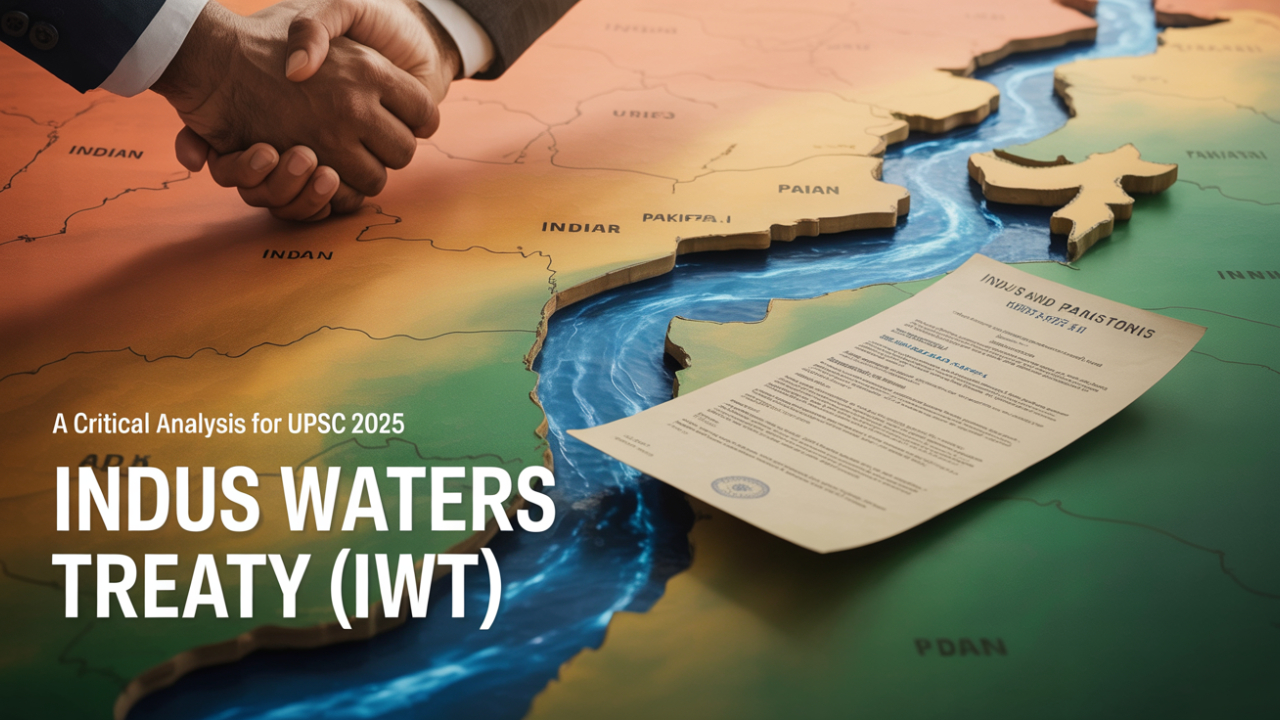An important treaty between India and Pakistan was the Indus Waters Treaty of 1960. The World Bank assisted it. This treaty outlines the two nations’ shared use of the water from the Indus River and its six branches.
By the treaty, Pakistan received the western rivers (Indus, Jhelum, and Chenab) and India the eastern rivers (Ravi, Beas, and Sutlej). Despite wars between India and Pakistan, this treaty has remained largely unchanged.
The treaty’s fairness and applicability have been debated in recent years. For an in-depth understanding and preparation, Indus Water Treaty Notes are important for grasping the treaty’s complexities.
Let’s see why the Indus Water Treaty UPSC is still applicable today, as it is a very important topic for preparation.
History and Background of IWT
On 19 September 1960, India and Pakistan signed the Indus Water Treaty 1960. Because many rivers that originated in India also flowed into Pakistan, both nations began battling over river water after the 1947 Partition.
The World Bank stepped up to offer assistance in finding a peaceful solution. Ayub Khan, the president of Pakistan, and Jawaharlal Nehru, the prime minister of India, signed the treaty after nine years of negotiations.
The main aim of this treaty was the fair division of the Indus river system upsc. This treaty remains strong despite the wars and border disputes between India and Pakistan.
For understanding the history, the Indus Water Treaty Summary provides an overview of and impact on both countries.
However, given the growing demand for water and the effects of climate change, some experts believe the treaty should be reviewed.
Key Provisions of the Treaty
Provisions outlined in the Indus Water Treaty 1960:-
- India has complete authority to use the eastern rivers (Ravi, Beas, and Sutlej) for farming, drinking, and power generation.
- India is permitted limited use of the Western Rivers (Indus, Jhelum and Chenab) for purposes such as small hydro projects and farming, but Pakistan retains primary control over them.
- Permanent Indus Commission: A group from both nations periodically gets together to exchange information and work out minor problems.
- Data Exchange: River data, including levels usage, and precipitation, must be shared between the two nations.
- Dispute Resolution: If an issue arises, assistance from the World Bank or an impartial expert may be taken.
- No Change Without Consent: Pakistan must be informed beforehand of any significant Indian projects involving western rivers.
For those preparing for UPSC, Indus Water Treaty Notes are an essential resource for understanding these provisions.
Rivers Covered Under IWT

Six of the Indus River’s tributaries are part of the Indus Water Treaty 1960. They are separated into two groups by the treaty.
Eastern Rivers:- Sutlej, Beas and Ravi. Mostly, these rivers pass through India. The treaty states that India is fully entitled to use its water resources for farming, drinking, and dam construction.
Western Rivers: Chenab, Jhelum and Indus. For the most part, these rivers pass through Pakistan. Pakistan is granted primary control under the treaty. The goal was to divide the water in a way that would benefit both nations.
For detailed study material and exam preparation, referring to Deoghar IAS academy Indus water treaty pdf can provide you with deeper insights into all clauses and conditions.
Recent Issues and Controversies
In recent years, there have been many problems with the Indus Water Treaty 1960. Both Pakistan and India have accused one another of violating the treaty’s provisions.
The World Bank received a complaint from Pakistan in 2016 regarding India’s Kishanganga and Ratle dam projects in Jammu and Kashmir. In 1987 after Pakistan protested the Tulbul navigation project was also halted, however India now intends to resume it.
Another issue was Pakistan’s LBOD project which goes through Gujarat without India’s consent. India claimed that this violates the treaty and could result in floods. For students preparing for current affairs, this issue is part of the Indus Water Treaty latest news, showing how water-sharing politics is still very active between both nations.
After the URI and Pulwama terror attacks, India declared it would use its full water share and issued a warning that blood and water cannot flow together. To understand all these issues clearly, a indus river system map for upsc is useful for visualizing river routes, dam locations, and disputed areas.
India recently put the treaty on hold after the Pahalgam terrorist attack, which claimed 26 lives and was referred to by Pakistan as an act of war. Because of these tensions, the treaty is now at risk. For a comprehensive understanding of these challenges, the Indus Water Treaty Summary is a valuable resource.
India’s Stand on IWT

India has consistently upheld the integrity of the Indus Water Treaty 1960 (IWT) even in the face of conflict and hostilities with Pakistan. However, because the treaty gives Pakistan more control over water, India has come to believe that it is unfair.
The majority of the water from the western rivers flows to Pakistan, while India only uses the eastern rivers to their fullest extent.
To prevent surplus water from entering Pakistan, India began construction on large water projects like Shahpurkandi and Ujh Dam after URI and Pulwama terrorist attacks.
In 2025 after the terrorist attack in Pahalgam, India declared that it was putting the treaty on hold. For UPSC aspirants, referring to the Indus River system map for UPSC is important to understand the geographical importance and water distribution.
India’s New Decisions Against Pakistan After the 2025 Ceasefire

After Operation Sindoor 2025, India took several decisive actions, including a ceasefire after four days of cross-border fighting. The suspension of the treaty is still in effect.
- India formally informed the World Bank of its desire to renegotiate the Indus Waters Treaty.
- India ceased to provide Pakistan with river data. Unless Pakistan takes significant action against terrorism, India said this data will not be shared again.
- New hydropower projects on rivers that flow into Pakistan have also been expedited by India.
- India established a new panel under the Jal Shakti Ministry and the Ministry of Political Affairs. To safeguard India’s rights, this panel will reexamine the treaty.
Strategic and Diplomatic Importance
Both India and Pakistan give great importance to the Indus Waters Treaty. Even during times of war, it has contributed to peace over water sharing for over 60 years.
India can strategically use the treaty as a tool to put pressure on Pakistan during tense times. In a diplomatic sense, the treaty shows that two adversaries can coexist peacefully. For Hindi medium aspirants, studying the Indus Water Treaty in Hindi is also helpful for better understanding and UPSC preparation.
But this peace is now at risk because of political problems and terrorism. For those preparing for exams, indus water treaty pdf resources can help in understanding the clauses in detail.
Relevance for UPSC (Prelims + Mains)
For the UPSC exam, the Indus Waters Treaty is an important topic. You might be questioned about the treaty’s signatories, the rivers covered or the current conflict between India and Pakistan.
It is useful for GS Paper II (International Relations) and GS Paper III (Environment Resources) in the Mains exam.
The treaty is all the more significant in light of India’s recent decision to put it on hold after the Pahalgam terror attack. Indus Water Treaty latest news often highlights such developments, making it essential for aspirants to stay updated.
Previous Year Questions (PYQS) Related to IWT
The Indus Waters Treaty (IWT) is an important UPSC exam topic. Prelims and Mains have frequently featured questions about India-Pakistan water dispute, and international relations.
Past questions include the following.
Prelims 2019: Which rivers are covered under the Indus Waters Treaty?
Mains 2017 (GS Paper 2): “The Indus Waters Treaty is one of the most successful international treaties in South Asia.” Discuss the key features and challenges.
Mains 2020 (GS Paper 2): India-Pakistan water dispute has taken a new shape. What are the options available to India under the treaty?
Conclusion
The Indus Waters Treaty is a unique example of amicable water sharing between two adversarial nations. It has prevented significant water wars for more than 60 years. However, the treaty is currently facing significant obstacles because of politics, terrorism and climate change. The two nations have accused one another of violating the regulations.
Those preparing for exams or seeking regional understanding can also refer to the Indus Water Treaty in Hindi resources for better clarity.This makes the Indus Water Treaty UPSC topic very important for understanding India’s water diplomacy, international relations, and environmental policy. Deoghar IAS Academy offers the best resources and guidance to help you excel in the exam.





